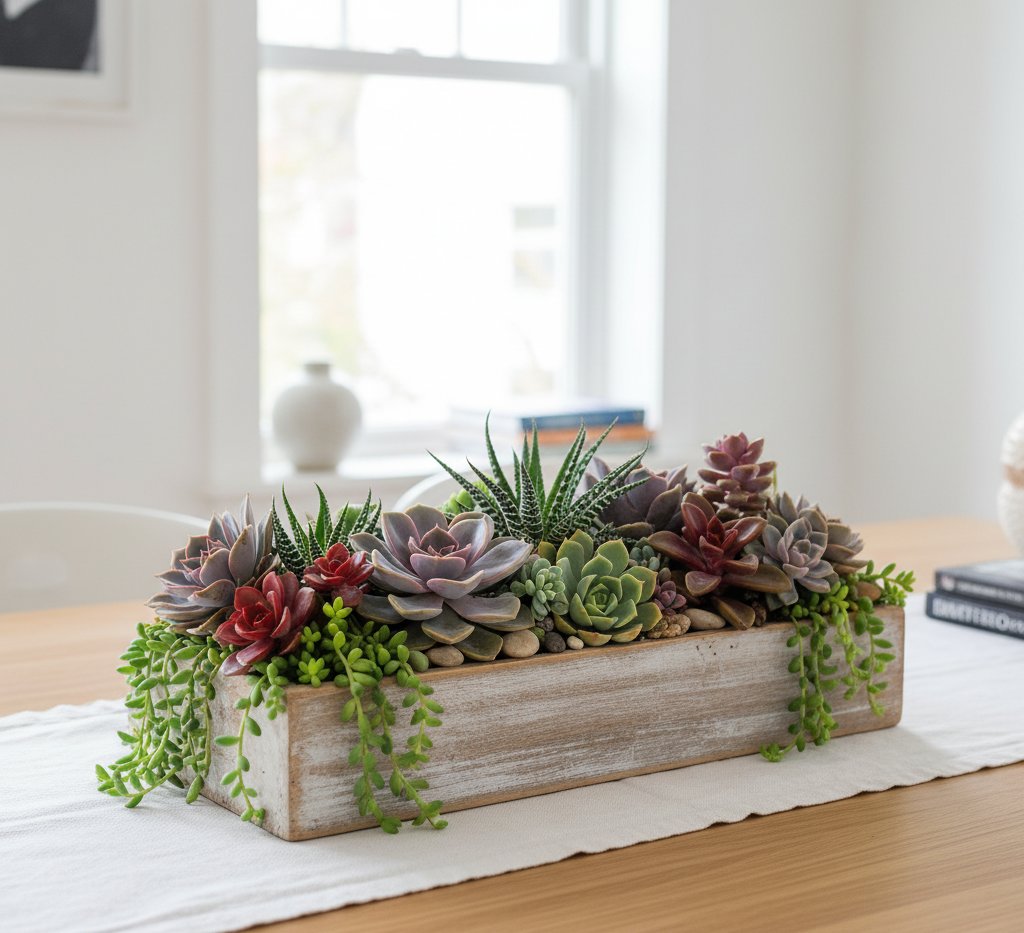Succulent Table Arrangements
Succulent table arrangements bring a simple yet stylish way to brighten any space. These plants come in many shapes and colors, making them easy to mix and match for a natural centerpiece that works with any style. You can create a table arrangement that looks beautiful, stays neat, and requires very little care.
You don’t need special skills or expensive supplies to make your own display. With a few succulents, the right container, and some basic design ideas, you can put together an arrangement that feels both personal and practical. Whether you want a modern look, a rustic touch, or something more playful, succulents give you the flexibility to match your space.
Key Takeaways
- Succulent arrangements add beauty and simplicity to any table
- Choosing the right plants and containers creates balance and style
- Simple care tips help your arrangement stay fresh and lasting
Key Elements of Succulent Table Arrangements
The most successful table arrangements balance plant choice, container style, and variety selection. Paying attention to plant size, shape, and growth habits helps you create a display that looks polished and lasts with minimal care.
Choosing the Right Succulents
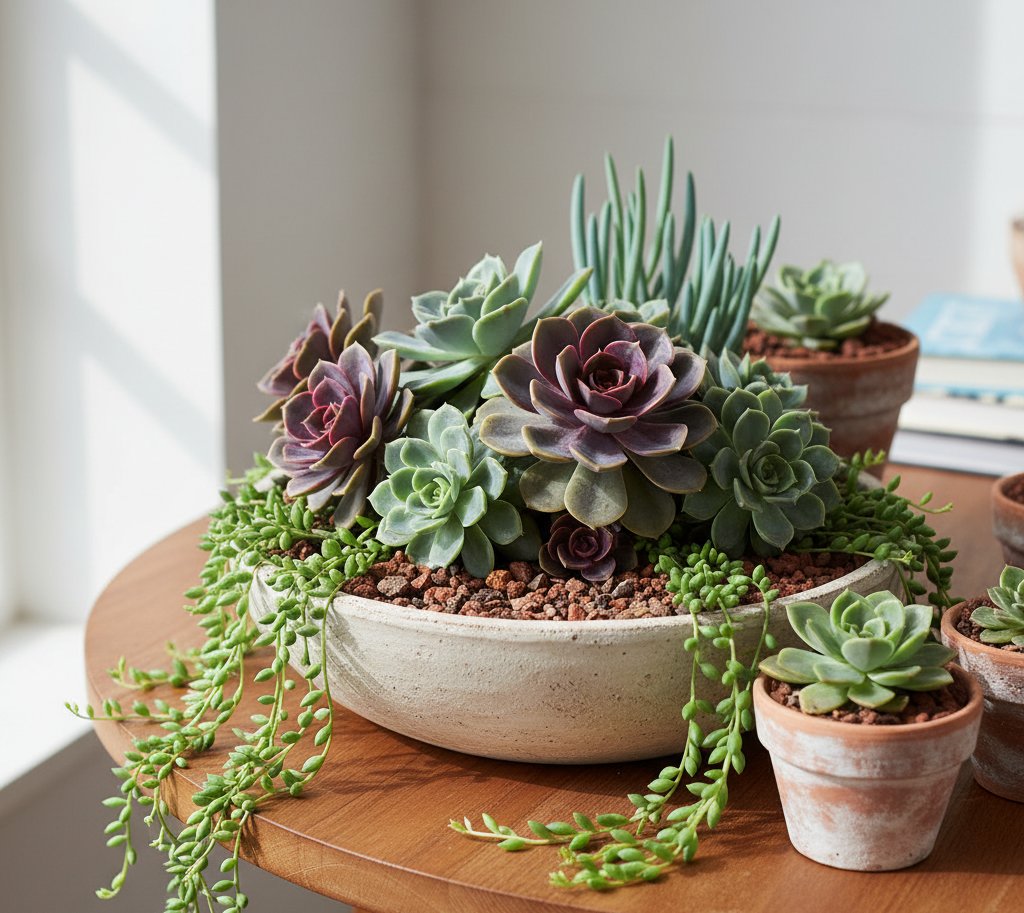
When selecting succulents, focus on shapes and textures that complement each other. Rosette-style plants like Echeveria or Sempervivum create a strong base, while trailing options such as String of Pearls or Burro’s Tail add movement.
Mixing colors also improves the look. Pair green varieties with purple or blue-toned succulents for contrast. Compact species work best for table settings since they stay neat and don’t overwhelm the space.
Consider light conditions. Most succulents need bright, indirect light, so choose plants that will thrive in the room where you place them. If the table is in a dim area, low-light tolerant varieties like Haworthia are a better fit.
Tip: Use 3–5 different succulent types in one arrangement to keep the display balanced without looking crowded.
Selecting Suitable Vases and Containers
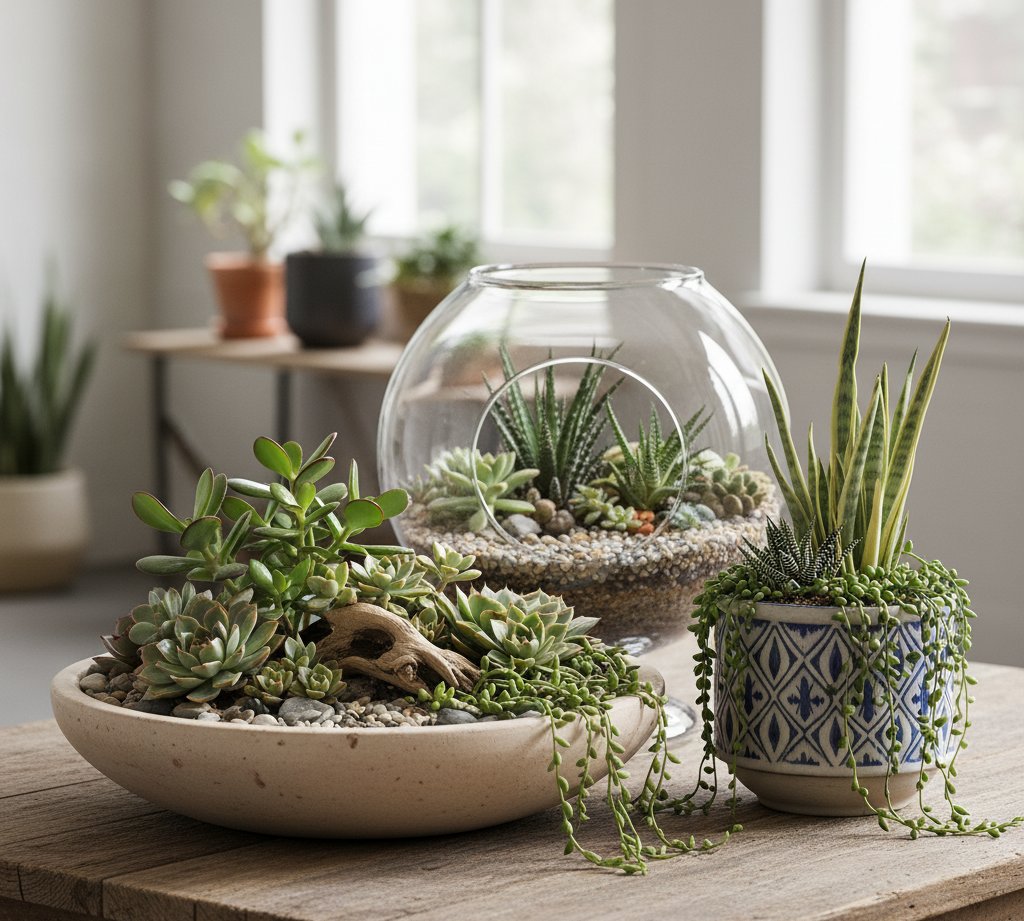
The container you choose affects both style and plant health. Shallow bowls, ceramic pots, or glass terrariums are popular choices for table arrangements. Always make sure the vase or container has proper drainage holes to prevent root rot.
Match the container material with the look you want.
- Ceramic: Classic and sturdy
- Glass: Modern and clean
- Wooden boxes: Rustic and natural
Size matters too. A wide, low container works best for centerpieces since it allows plants to spread without blocking views across the table. Avoid tall vases that make arrangements unstable or limit visibility.
If you want a minimalist look, use a single succulent in a small pot. For a fuller display, group several containers of different sizes together.
Incorporating Jade Plant Varieties
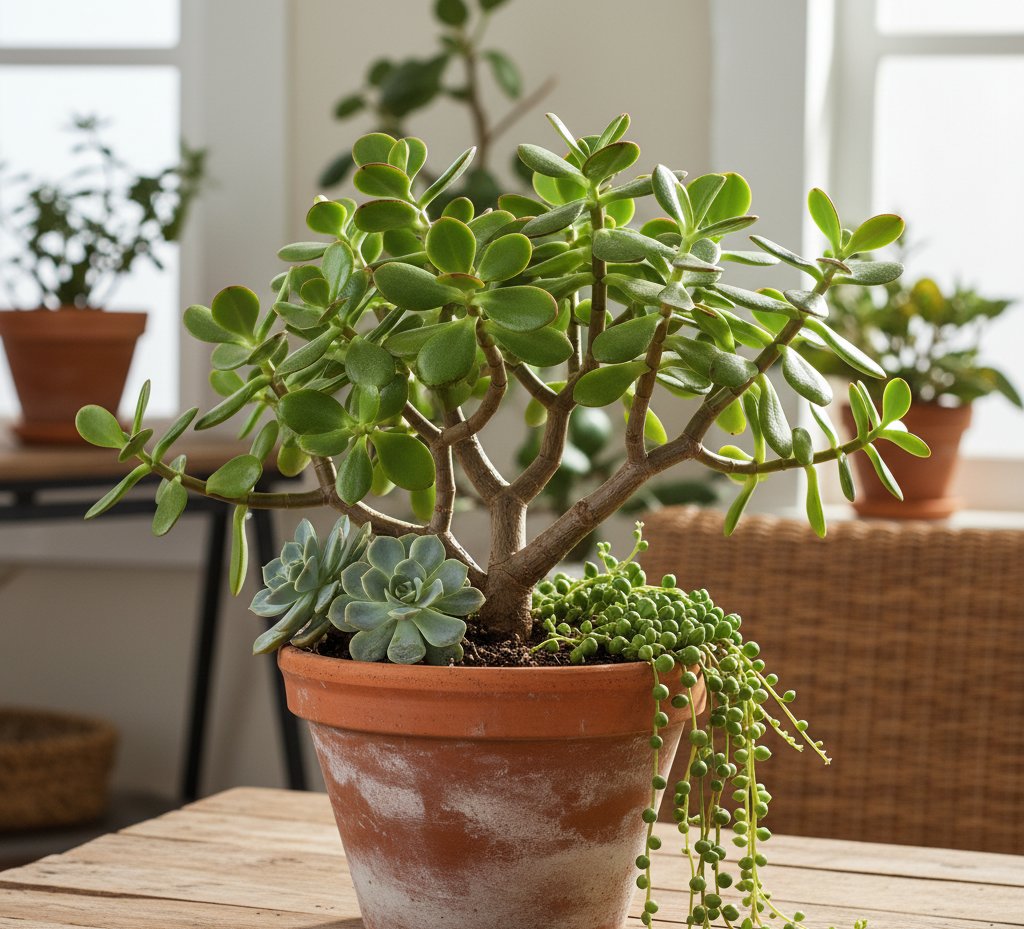
Adding jade plants introduces variety in both shape and texture. Jade plants (Crassula ovata) provide thicker leaves and a tree-like form.
These plants are hardy and require little water, making them reliable choices for long-lasting arrangements.
Jade plants work well in medium-sized containers where their branching structure can develop. They pair nicely with rosette succulents or trailing species, creating contrast without overwhelming the arrangement.
Note: Jade plants tolerate slightly deeper pots, giving you more flexibility in container choice.
Creative Succulent Arrangement Ideas
Succulent arrangements work well in many settings because they combine low maintenance with lasting beauty. You can adapt them to fit everyday tables, seasonal themes, or more decorative displays by pairing them with other design elements.
Tabletop Centerpieces for Every Occasion
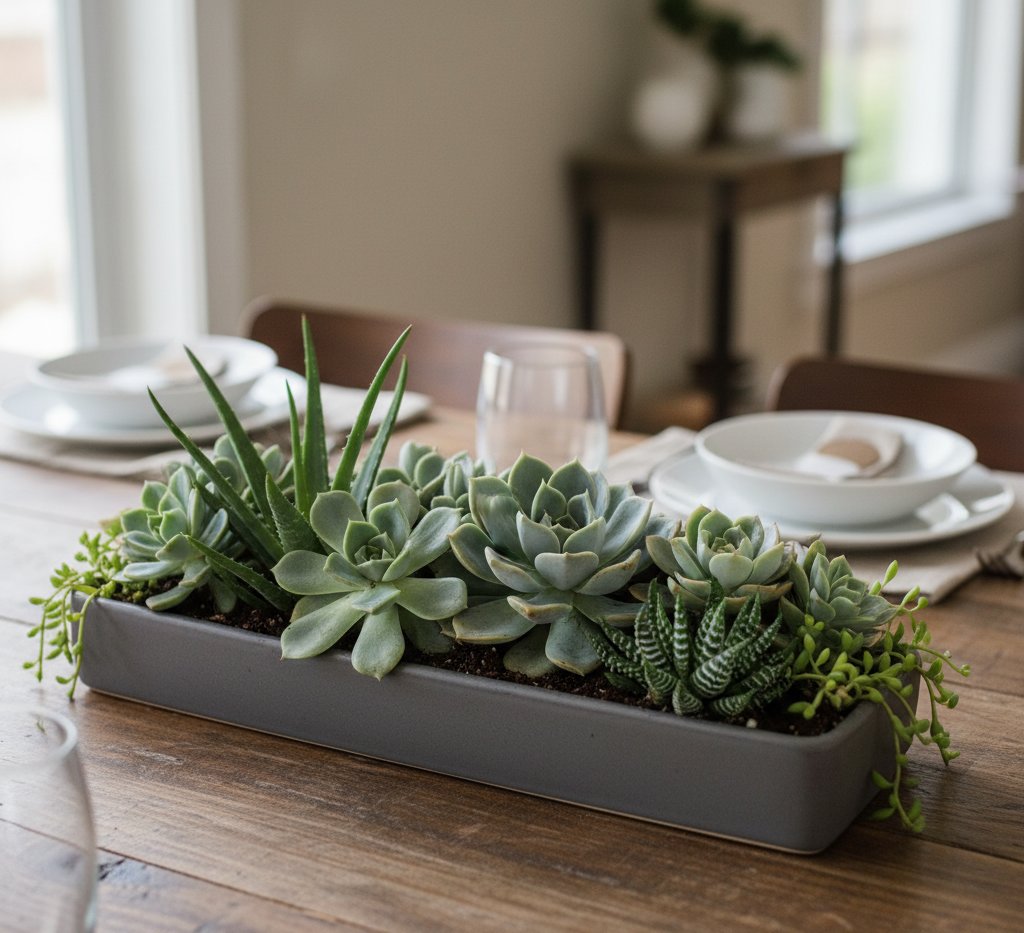
Succulent centerpieces suit both casual and formal tables. You can place a single large rosette in a shallow bowl for a clean, modern look, or group several small succulents together for a fuller display.
For dining tables, choose low containers so the arrangement doesn’t block conversation. Rectangular trays, driftwood pieces, or ceramic dishes all work well.
If you want variety, mix different shapes such as spiky aloe with rounder echeveria. Keeping the color palette consistent, like shades of green and gray, creates a balanced design that looks intentional.
A simple way to make a centerpiece last longer is to plant succulents in soil-filled containers rather than temporary foam bases. This allows them to grow and stay fresh for months with minimal care.
Themed Arrangements and Seasonal Designs
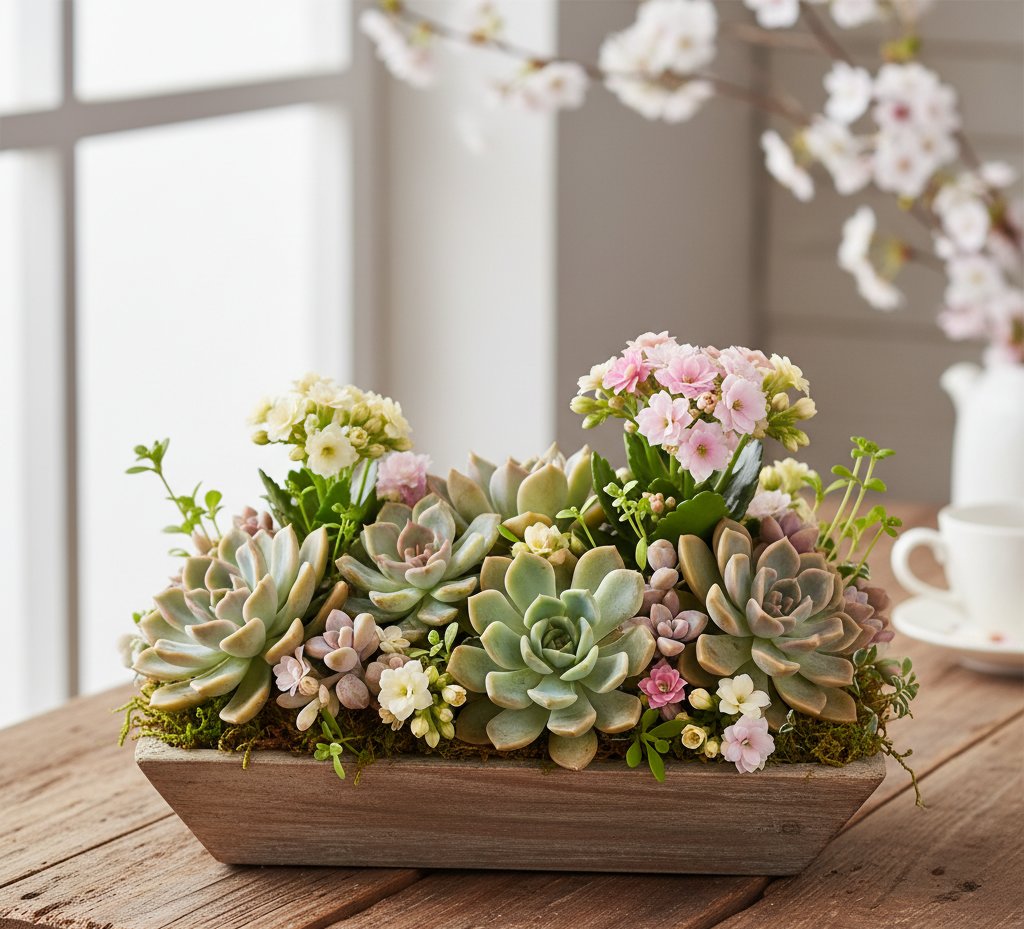
You can design succulent arrangements that reflect specific seasons or events. For example, in spring, combine pastel-colored succulents with small blooms like kalanchoe. In autumn, pair orange or burgundy succulents with miniature pumpkins or rustic wooden containers.
Holiday tables often benefit from themed accents. For winter, mix green succulents with pinecones, white stones, or metallic ornaments. In summer, use bright pots or beach-inspired containers filled with sand and shells.
Event-specific designs also stand out. Weddings often feature succulents in soft neutral tones, while birthday parties may use colorful pots or painted containers. Matching the arrangement to the occasion helps tie the table decor together.
When you plan a seasonal arrangement, focus on both color and texture. This makes the display cohesive while still highlighting the unique qualities of each succulent.
Mixing Succulents with Decorative Elements
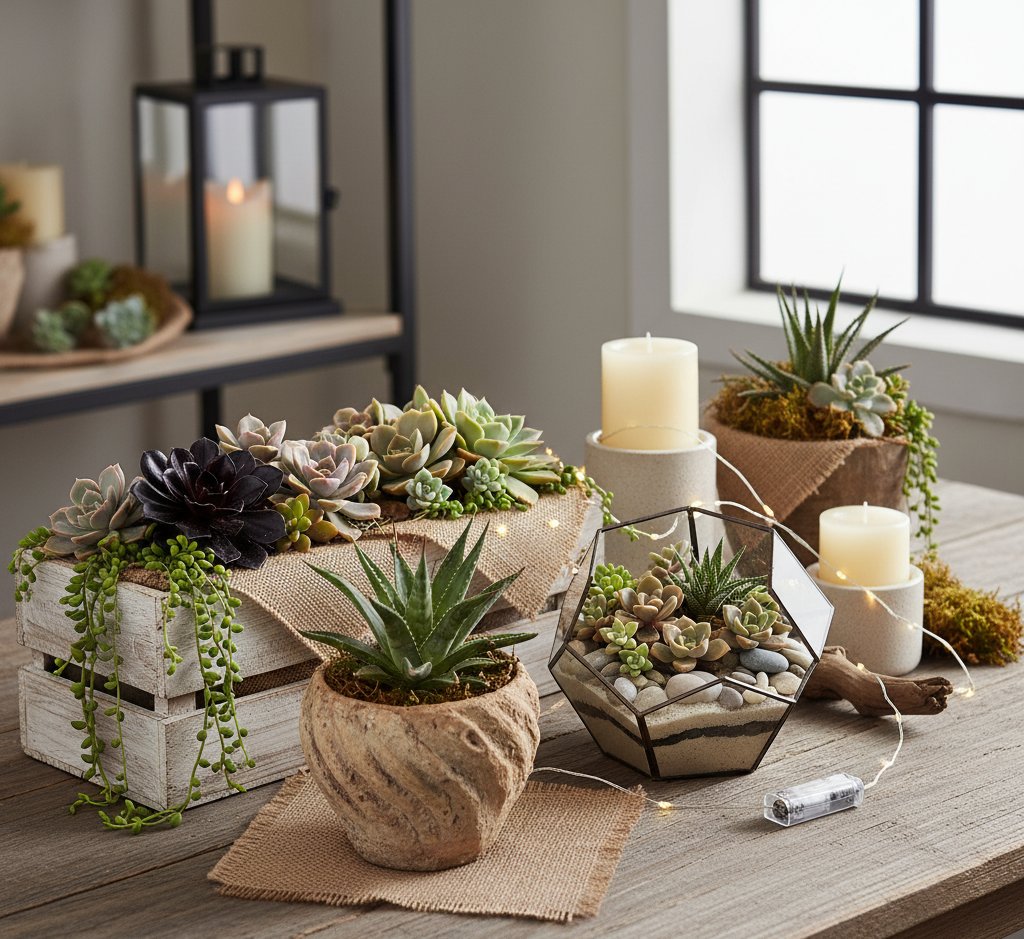
Adding extra elements can elevate a simple succulent display. You can layer natural materials like pebbles, preserved moss, or driftwood around the plants for texture.
For a more polished look, place succulents in glass terrariums with sand or stones at the base. This works well for modern or minimalist spaces.
Candles also pair nicely with succulents. Use unscented candles in neutral holders for aesthetic appeal and be mindful of the flame’s heat and potential fire hazard near foliage. For outdoor tables, lanterns or string lights can add warmth without distracting from the arrangement.
If you prefer a rustic style, combine succulents with reclaimed wood boxes, burlap wraps, or clay pots. These materials highlight the natural qualities of the plants and make the arrangement feel grounded and simple.

